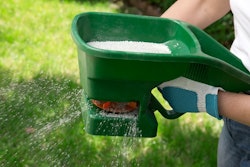 Photo: Bobcat
Photo: BobcatTransporting a compact excavator from one jobsite to another involves several steps that should not be overlooked when using thorough and consistent hauling techniques. Sound hauling practices, such as using right-sized transport and towing vehicles, and correctly loading, positioning and securing equipment will help you minimize loading challenges that can hinder your productivity.
Following three key steps outlined by Jason Archbold, marketing manager for Bobcat Company, and the recommendations in your Operation & Maintenance Manual, you can properly transport your compact excavator to your next jobsite or back to your storage facility.
Select the right transport and towing vehicles
The first step before transporting your compact excavator from one location to the other is to properly match the transport and towing vehicles to the equipment. According to Archbold, it’s important to ensure that the transport and towing vehicles are of adequate size and capacity for the weight of the machine and attachments being transported.
“Trailers are one of the most popular and efficient ways to properly transport excavators and attachments,” Archbold says. “Some smaller equipment can be transported on a 10,000-pound trailer, while larger equipment may require a 20,000- to 30,000-pound trailer or larger. If transporting an excavator and couple of attachments, you will most likely need a larger trailer with a larger weight rating to handle the load you are moving.”
Adequately designed ramps of sufficient strength (wood ramps can break and cause personal injury) are needed to support the machine’s weight when loading onto a transport vehicle.
Load the machine properly
Loading excavators onto trailers requires consistency to ensure critical actions are not missed.
Follow the correct loading procedures as outlined by Archbold:
- Block or support the rear of the trailer when loading or unloading a compact excavator to prevent the front end of the trailer from rising.
- Make sure the compact excavator’s undercarriage is free of mud, sand and any other debris before loading the machine.
- Always disengage the auto-idle feature (if equipped) when loading or unloading a compact excavator on a trailer.
- Travel up the ramp with the heaviest end up when you are loading the compact excavator onto the trailer. The excavator will be heavier in the front since it is likely connected to an attachment.
Secure the compact excavator
The third step in the transport process is also critical and is best performed in a methodical manner to ensure that each measure is performed. Once the compact excavator is on the trailer, lower the boom, arm, bucket and blade to the trailer floor, stop the engine and engage the parking brake. Upon completion of a machine’s positioning, install chains at the front and rear tie-down positions as identified by your Operation & Maintenance Manual. Some manufacturers provide multiple tie-down points, making it easier to trailer the equipment. Finally, secure the chains and binders using recommended practices listed in the manual.
Securing excavators with attachments and accessories is especially important if you are hauling several items to jobsites on one trailer.
“Some companies are able to customize their trailers to accommodate their most commonly used attachments by adding side pockets or racks built to hold them,” Archbold says. “Operations that might benefit from a customized trailer include landscaping companies that use buckets to prepare sod or seed.”
With efficient planning and loading procedures, your trailers can accommodate a wide variety of attachments helping you avoid using multiple vehicles to move equipment and attachments from jobsite to jobsite. Creative trailer designs and careful planning can add up to significant vehicle and fuel savings in the long run.
Following the fundamentals of transporting compact excavators cannot only save you time because procedures are performed consistently and orderly, but it can save money as trailer customization allows for more efficient hauling. Following these three key steps and instructions along with the recommendations in your manual can help minimize issues or problems the next time you transport your excavator to the jobsite.
EDITOR’S NOTE: This article was written by Allison McNeal. McNeal works with Two Rivers Marketing in Des Moines, Iowa.









